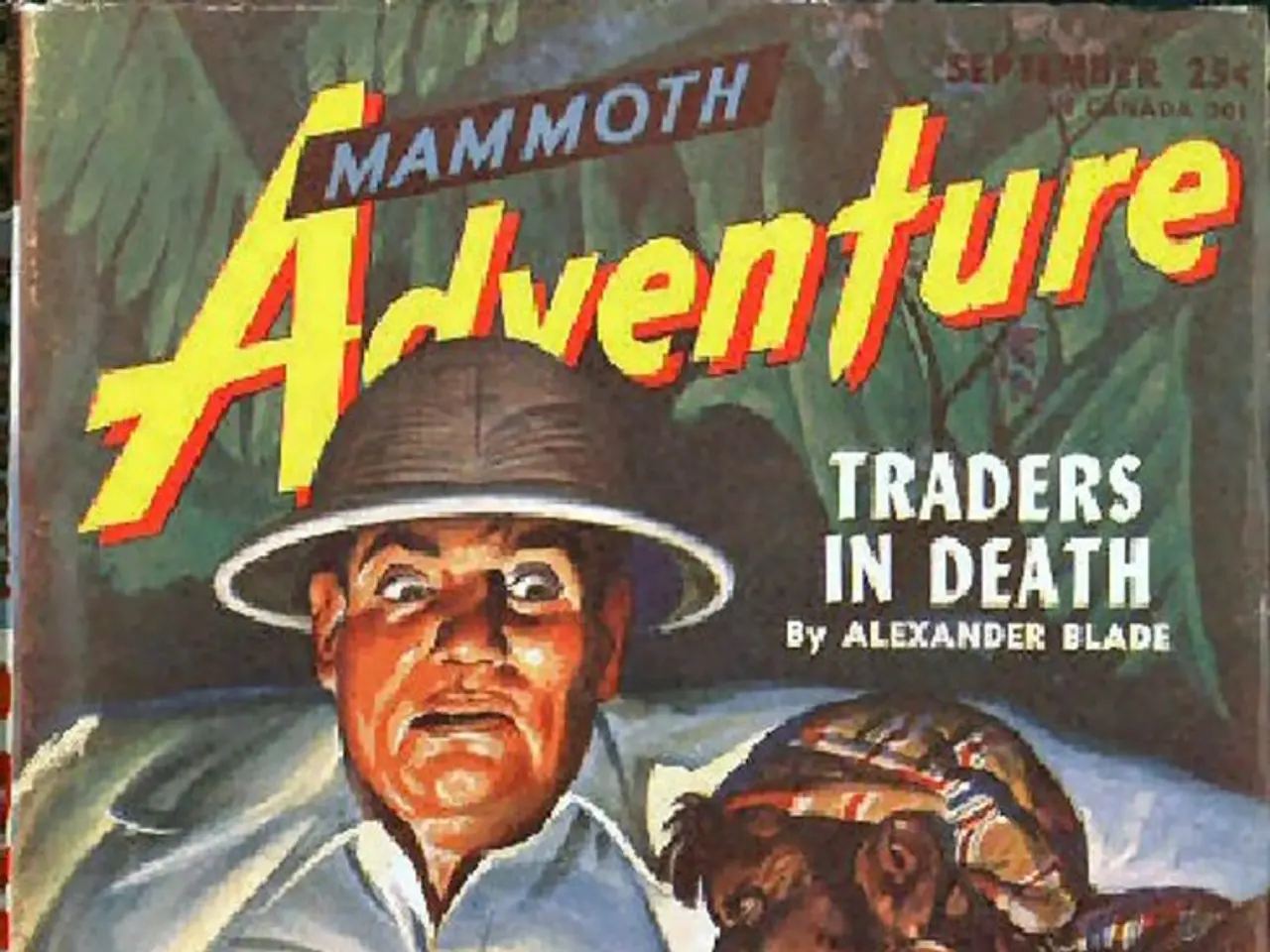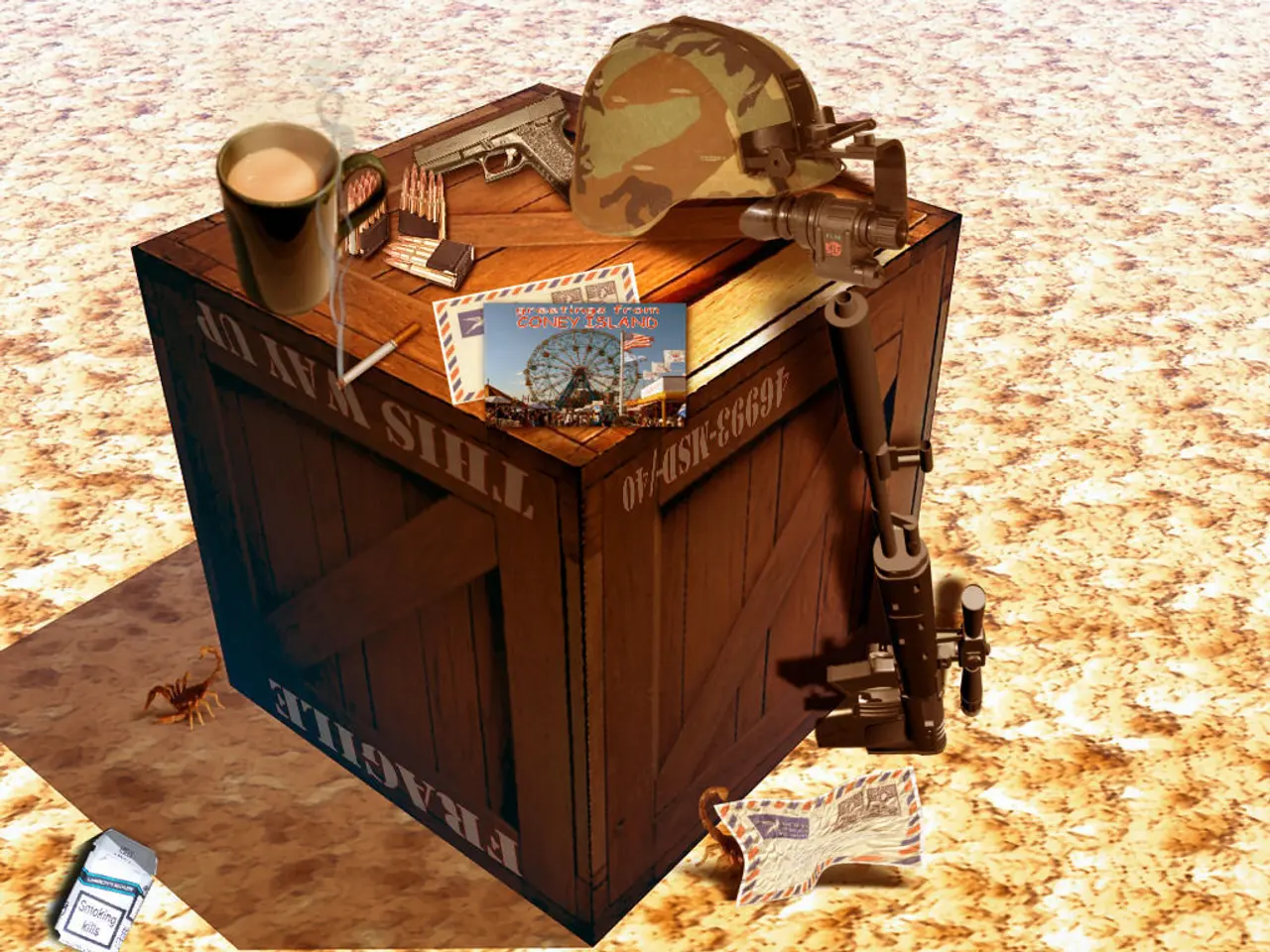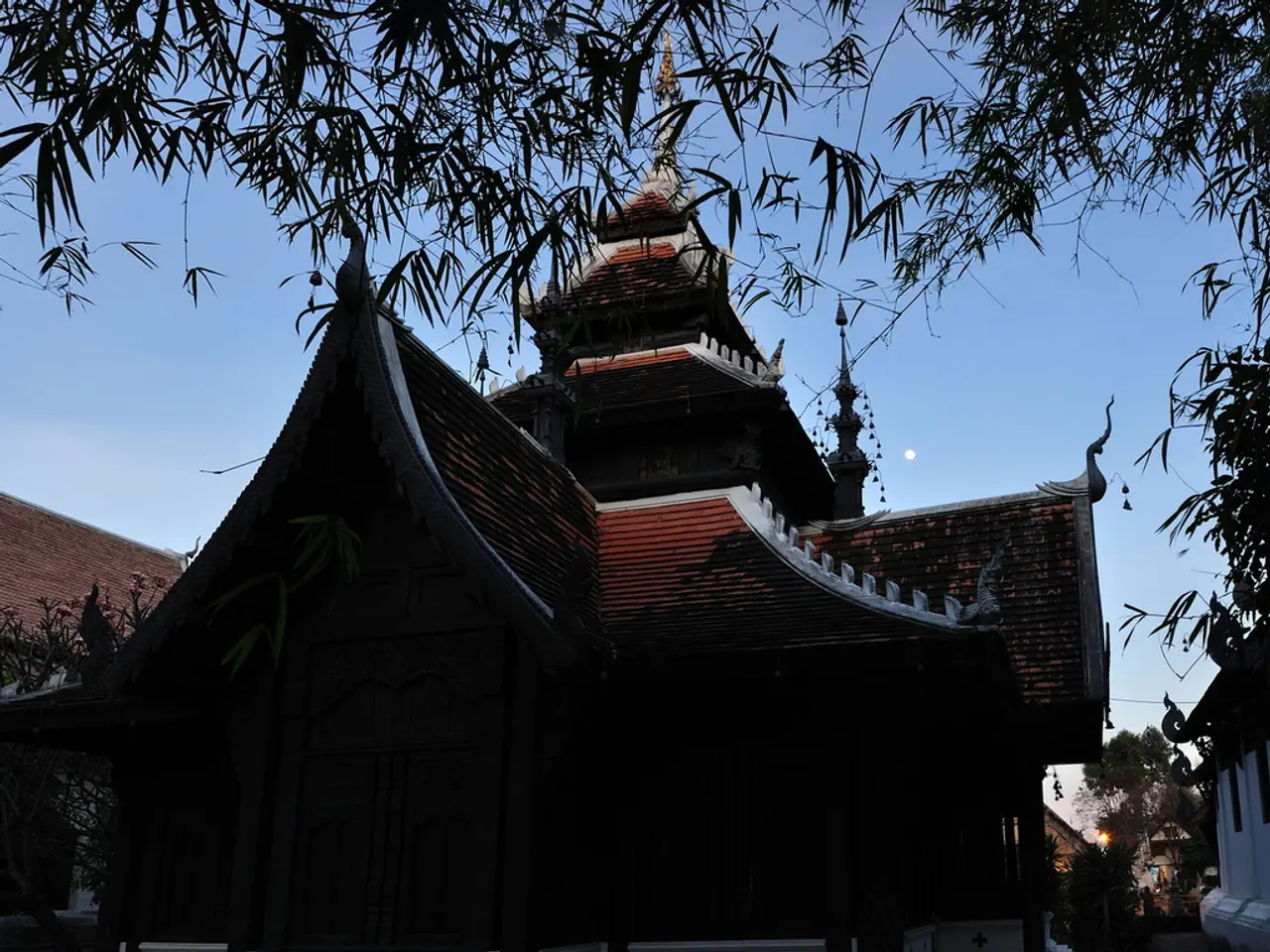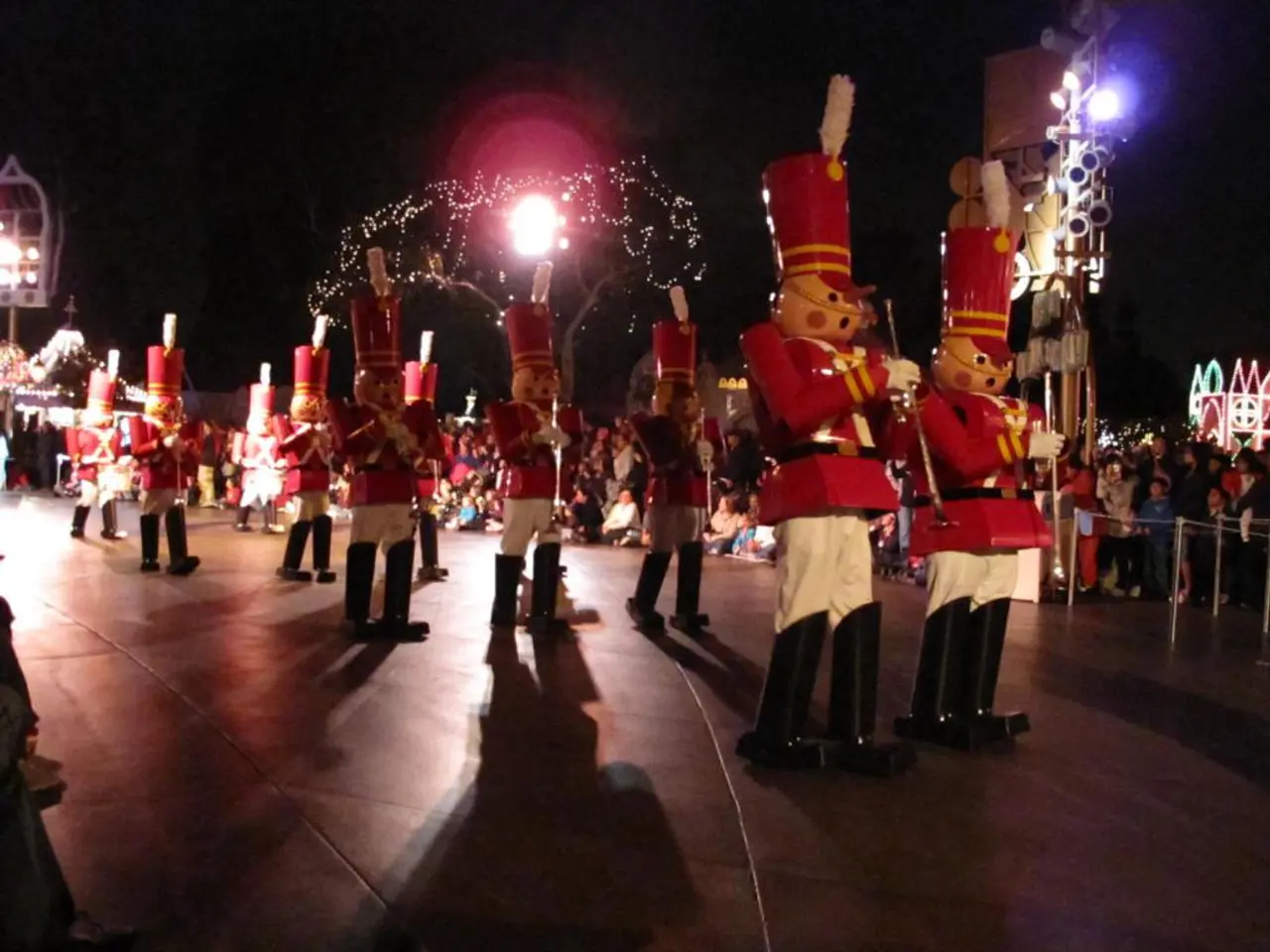Updated Artwork from 1990 by Barbara Kruger Now Stands as This Year's Most Powerful piece of Art
Barbara Kruger's iconic artwork, Untitled (Questions), first unveiled in 1989, continues to be displayed at the Museum of Contemporary Art Los Angeles (MOCA) despite initial plans to take it down after the 2020 Presidential elections in the US. Measuring a staggering 191 feet long, this powerful piece of art has remained a relevant and provocative commentary on power, identity, and societal structures.
Originally intended to feature the text of the Pledge of Allegiance, Kruger's proposal was ultimately rejected due to concerns from local Japanese Americans, who felt it would evoke harmful memories of their ancestors being forced to recite the Pledge while incarcerated during World War II.
In a 2018 interview, Kruger expressed her disappointment that her work, 30 years later, might still hold resonance. However, the artwork's enduring relevance is evident in its continued display and its role in recent protests. In June 2020, Untitled (Questions) was spotted on CNN, and Kruger herself used the image as one of the opening folios for the catalog for her 2021 Art Institute of Chicago survey.
Moreover, in 2020, another Kruger work, also titled Untitled (Questions), commissioned by the Frieze art fair, played a role in fresh protests over the police killings of Black Americans. This piece, like its counterpart at MOCA, is a powerful indictment of power structures, albeit without direct Trump references.
Kruger's art has always been about communicating directly about power dynamics. Her text-heavy artworks make visible secret forms of power and control in the media, and her work has been commonly referenced by activists who find resonance in artworks made decades ago by her.
The artwork's signature red, white, and blue palette echoes American national symbolism while simultaneously questioning the narratives underpinning these power structures. Its text-based format provokes critical engagement with political and social binaries and underscores the persistence of systemic inequities.
The significance of Untitled (Questions) lies in its capacity to remain a powerful, visually striking inquiry into the foundations and consequences of power dynamics. Its message continues to provoke reflection and contestation in light of recent U.S. political events and ongoing struggles over identity and authority.
In 1992, National Guard soldiers were seen beneath Kruger's mural in a photograph by Gary Leonard, during widespread protests in LA following the acquittal of four Los Angeles Police Department police officers accused of using excessive force on Rodney King. This historical connection underscores the artwork's enduring relevance and its ability to reflect the anxieties and questions circulating in American society today.
In conclusion, Untitled (Questions) stands as a monumental work that challenges observers to reflect on contemporary issues such as authority, control, and individual agency within the U.S. Its continued display serves as a testament to its enduring urgency and vitality in the current sociopolitical climate.
- Barbara Kruger's Untitled (Questions), first displayed in 1989, remains a contemporary piece at the Museum of Contemporary Art Los Angeles (MOCA), provoking discussions on power, identity, and societal structures.
- Kruger's artwork, initially rejecting a proposal to include the Pledge of Allegiance, continues to resonate with relevance, sparking controversy in recent protests at museums, galleries, and art fairs.
- The enduring impact of Untitled (Questions) is mirrored in various contexts, from news coverage (CNN) to fresh protests over police killings of Black Americans, questioning power structures beyond Trump-centric references.
- Kruger's art actively communicates about power dynamics, making visible secret forms of control in media and remaining a common reference point for activistsfinding resonance in her decades-old works.
- The artwork's red, white, and blue palette echoes American national symbolism while challenging the narratives underpinning these power structures, inviting critical engagement with political and social binaries and systemic inequities in modern art, entertainment, politics, and general news.








